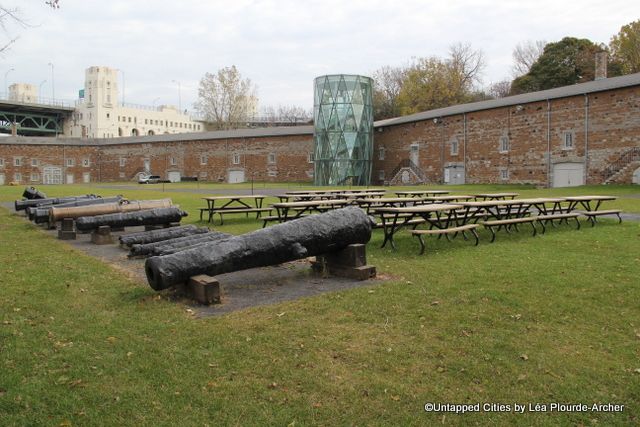Last-Minute NYC Holiday Gift Guide 🎁
We’ve created a holiday gift guide with presents for the intrepid New Yorker that should arrive just in time—



World War II ended nearly 70 years ago but to this day, many little known facts about the local repercussions of the war remain under wraps. Throughout Canada and the United States, thousands of people were held prisoner in internment camps for months, even years, often simply because of their origins or religious beliefs. In Montreal, the fort of Ile-Sainte-Hélène was turned into an internment camp for up to 401 men between July 1940 and October 31st 1943.
When the camp opened in early July of 1940, everything had happened rather quickly. On June 10th, Italy had declared war on Britain and France. Arrests of enemy aliens (Italians, Germans and Austrians) were ordered immediately by the British authorities and most took place between June 10th and June 15th. These people were jailed and subsequently put on boats that were headed throughout the British colonies, which had been pressured into helping out with the war effort. In Canada, approximately two dozen internment camps were set up, including the prison simply known as camp s/43 in Montreal. While most camps also held Canadian enemy aliens, Montreal’s detainees were all Italians living in Britain, mostly in Scotland.
Most of the men that were transferred to camp s/43 were Italian immigrants who had kept their dual nationality. A fear that they were secret fascists helping the enemy made them a menace, according to the British government (prime-minister William Churchill alluded to a possible fifth column of enemy nationals). Merchant seamen and a number of Jewish citizens were also brought over to the Montreal prison camp and were detained for various reasons. Eventually, the Jewish detainees obtained refugee status and were freed.
One former internee, a Scottish citizen named Joe Pieri, wrote of his experience in the book Isle of the Displaced. His story, published in 1997, helped to put detail into what we now know about the reality of camp s/43. Through his words, it seems that life inside the Montreal camp was quite peaceful and that a semblance of normalcy had installed itself within the prison walls throughout the years. People of all walks of life were mixed together and things generally went smoothly. Regardless of treatment, the reality of these people, mostly innocent civilians, being pulled away from their families and into prisoner of war remains unjustifiable and Pieri sought to share his story.
Built in 1820, the military fort that was used for the prison camp currently houses the Musée Stewart, a history museum. In 2012, historian Maryse Bédard, an intern at the museum, was given the mandate of researching the history of camp s/43 . Starting out with very little information, she managed to find out many things by going through Canada and Great Britain’s national archives.
Today, well past the end of her internship, she has kept on working on the fascinating subject. Slowly, information is being pieced together bit by bit in order to gain an understanding of the daily life in the camp. Maryse Bédard and the Musée Stewart are also working to raise awareness about this largely unknown fact in Montreal history. Last month, a conference was held at the museum by Ms. Bédard herself, in an effort to introduce the subject to the general public.

This internment camp isn’t Montreal’s only surprising secret pertaining to World War II. Last month we reported about a church fresco in the neighborhood of Little Italy where to this day, Italian dictator Benito Mussolini sits proudly among the angels and saints. As mentioned in the article, the artist who painted the mural was jailed in an internment camp due to his supposed fascist tendencies. Though he wasn’t jailed at camp s/43, his story is similar to that of many of these men who spent up to three years of their lives not knowing if or when they would return home to be with their families.
Subscribe to our newsletter